Bluegrass’ biggest ambassador continues expanding his sound with more pedals, more modeling, more Martins, and a dark-arts guitar. Plus, we find out whose ashes are inside his 1945 D-28.
It’d be hard to argue that anyone has changed their sound as much as Billy Strings has in the last 10 years. If you reference the pre-war traditional collaboration albums he first did with Don Julin (Rock of Ages and Fiddle Tune X), and his solo debut EP Billy Strings, and then witnessed one of his recent high-voltage shows, the songs and sounds are both worlds apart … yet familiarly rooted. He went from opening on the Bluegrass circuit to a crossover festival headliner that’s more Dead than Doc. He’s now filling arenas and amphitheaters as an evening-with performer that often crushes for over three hours by incorporating sideways jams and creative covers. However, each set still includes moments where the four musicians onstage stand around a single mic, just as their bluegrass forefathers did generations ago. So, even as he sends bluegrass into the cosmos, he keeps one foot planted in Appalachia.
Strings shared his thoughts on that juxtaposition during a 2019 PG interview: “Before writing my own music, I used to be boxed in by bluegrass, but enjoying other musical genres made me realize it’s a self-made, transparent box,” he said. “Music should be freeing, with no borders. I want to express myself emotionally with my guitar, however it pours out of me.”
When the Rig Rundown team traveled north to Indianapolis’ TCU Amphitheater at White River State Park, we didn’t know what to expect, but Strings’ full-monty setup did not disappoint. His rig still has delightful dreadnoughts, including some new old friends from Martin, but the many tricks rolled up his sleeve (or in his rack) allows this psychedelic sorcerer to cast spells over audiences all night long. Billy gave an hour to PG’s Perry Bean, where they covered electrifying acoustics, just whose ashes are in his 1945 Martin D-28, and how he continues coloring outside the traditional lines with stompboxes and modelers.
Brought to you by D’Addario XS Strings.Meet Frankenstein
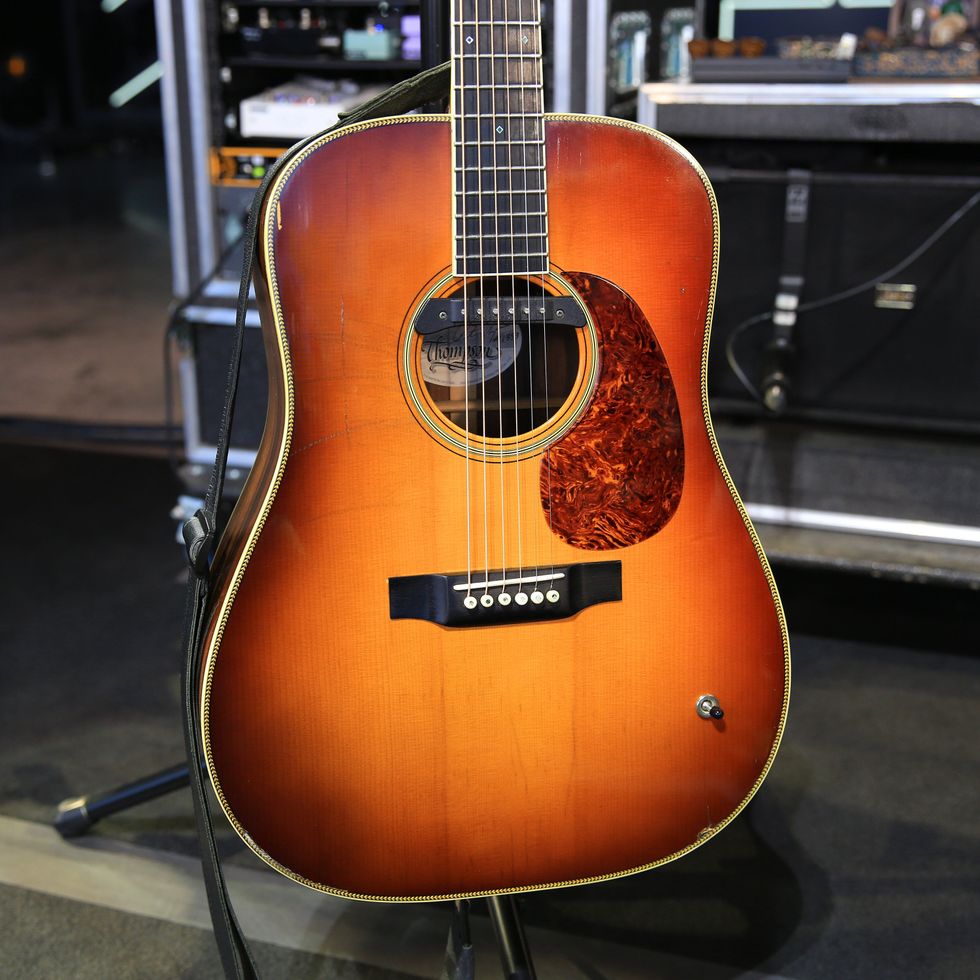
This 2017 Preston Thompson DBA dreadnought, dubbed Frankenstein, is Strings’ No. 1 touring acoustic. Within his recent PG cover story with fellow bluegrass superstar Molly Tuttle, he elaborated on the guitar’s history: “It’s a Brazilian rosewood, spruce-top dreadnought. I’ve been playing it for several years and that’s the guitar that I play onstage. It’s been through hell. It’s been smashed and it’s been put back together. But it always sounds the best plugged in. I use a K&K pickup and I run it through a Grace Design BiX. Also, I have a ’45 Martin that I just put a pickup in. I just wanted to have an old one that I can play onstage. But every time, I go back to Old Faithful. I started calling that guitar Frankenstein—originally because I put all those different pickups in it, and the switch, and it’s got a Shure microphone installed on the inside that goes to my in-ears. And I had them make me another one just like it, and that’s The Bride.”
Additionally in the Rundown, Strings notes that this dread is the best plugged-in acoustic he has in his collection. Part of its voice is the K&K Sound Pure Pickup system that is underneath the bridge saddle, which he puts on all his acoustic-electric guitars. An added development since our 2019 Rundown was the incorporation of the K&K Sound Double Helix soundhole pickup that is hum-canceling and dual-coil. A Shure WB98H/C Cardioid Clip-on Instrument Microphone lives underneath the guitar’s top, giving a pure feed to FOH and his in-ear monitors. The switch on the guitar’s top (added by Scale Model Guitars’ Dave Johnson) engages the soundhole pickup when he wants to run his acoustics through his electric rig that hits pedals and a Kemper. All of Billy’s acoustic-electric instruments have this wiring.
Strings made sure to give a shout-out to D’Addario for their XS Phosphor Bronze strings (.013–.056), saying “Gotta have that medium gauge, gotta have that coated, ’cause we sweat like crazy. And they don’t break!” All his guitars take the medium set. He exclusively uses Elliott Capos and he plays BlueChip TP48 Speed Bevel Right Hand picks onstage. He landed on this particular pick because it’s what Bryan Sutton shreds with.
Busted
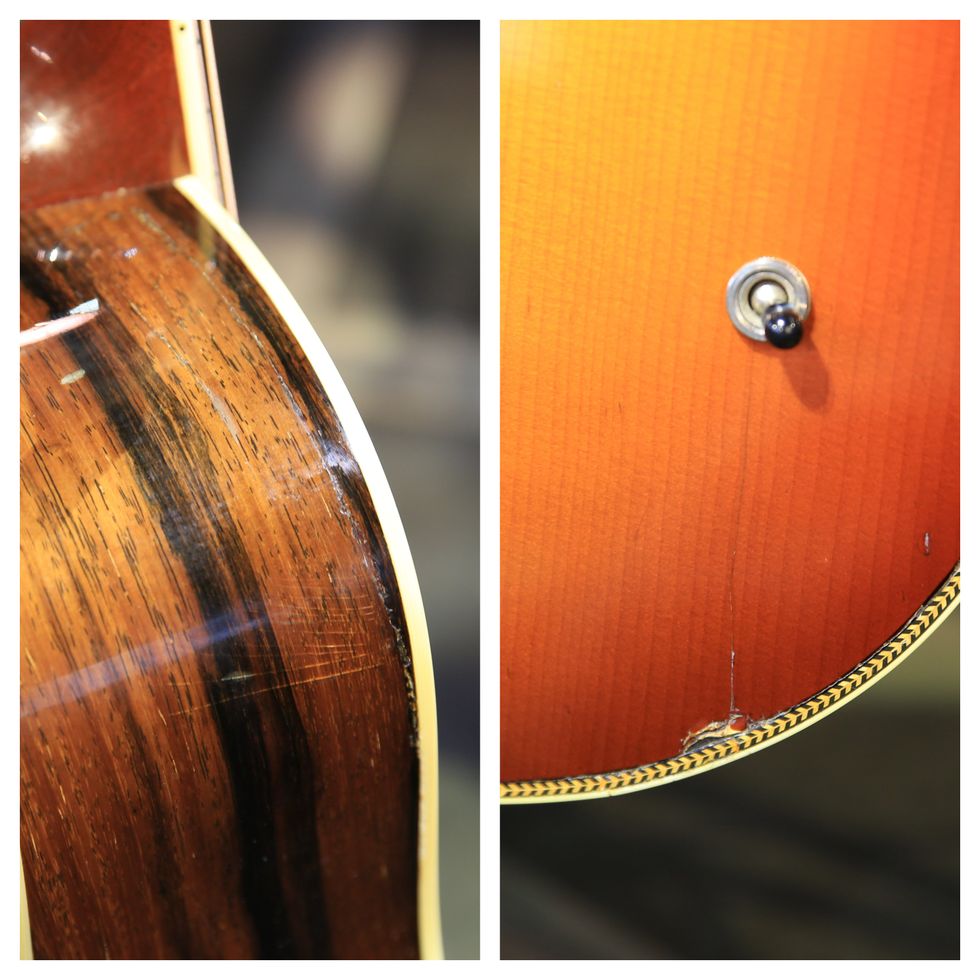
Frankenstein has not only gone through electrical updates, but it’s spent some time on Dave Johnson’s workbench getting repaired due to road burn.
Bride of Frankenstein
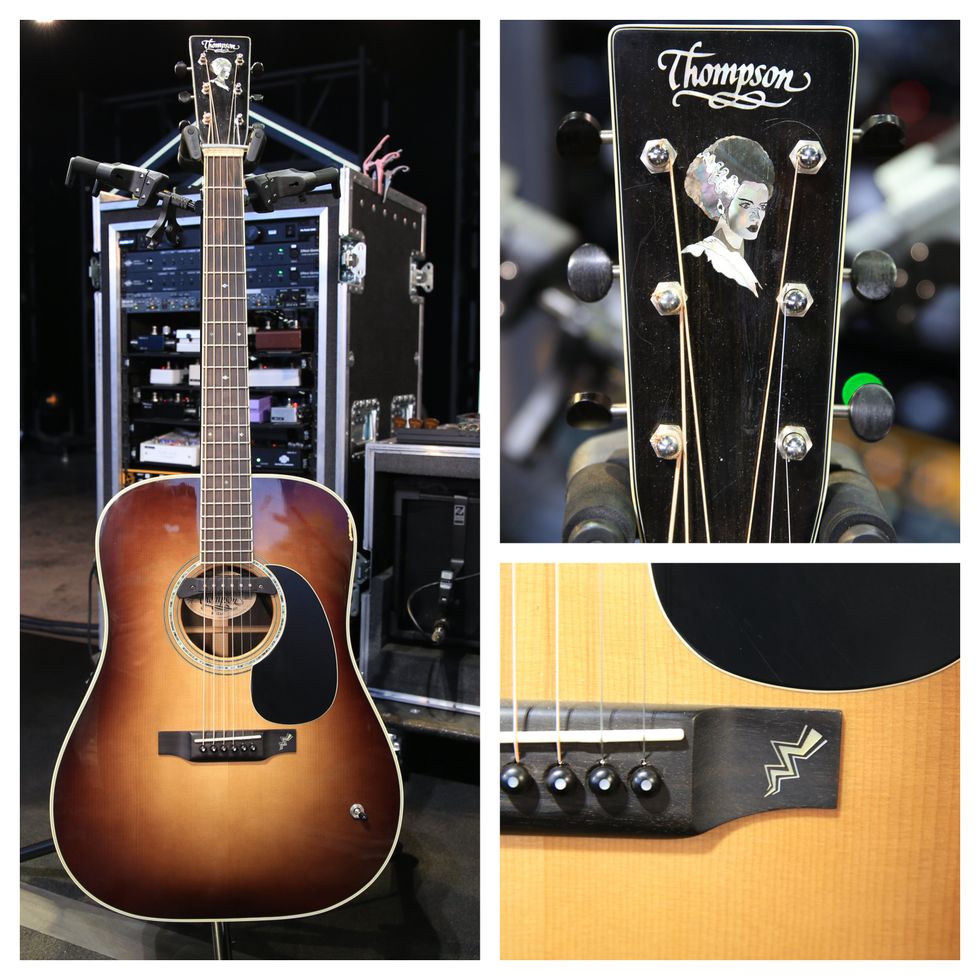
Four years ago, Strings toured with just one Thompson. His love and bond with Frankenstein, or Old Faithful, spawned into a pair of Preston Thompson DBAs. The Bride has the same specs and electrical DNA as its predecessor, but features a smoky charcoal sunburst finish. The inset photos show off subtle nods to the ’30s monster classic, including lightning bolts on the bridge and fretboard, while the headstock sports the iconic character originally played by Elsa Lanchester. He often uses it in a lower tuning for the title track off Home.
Jody Like a Melody
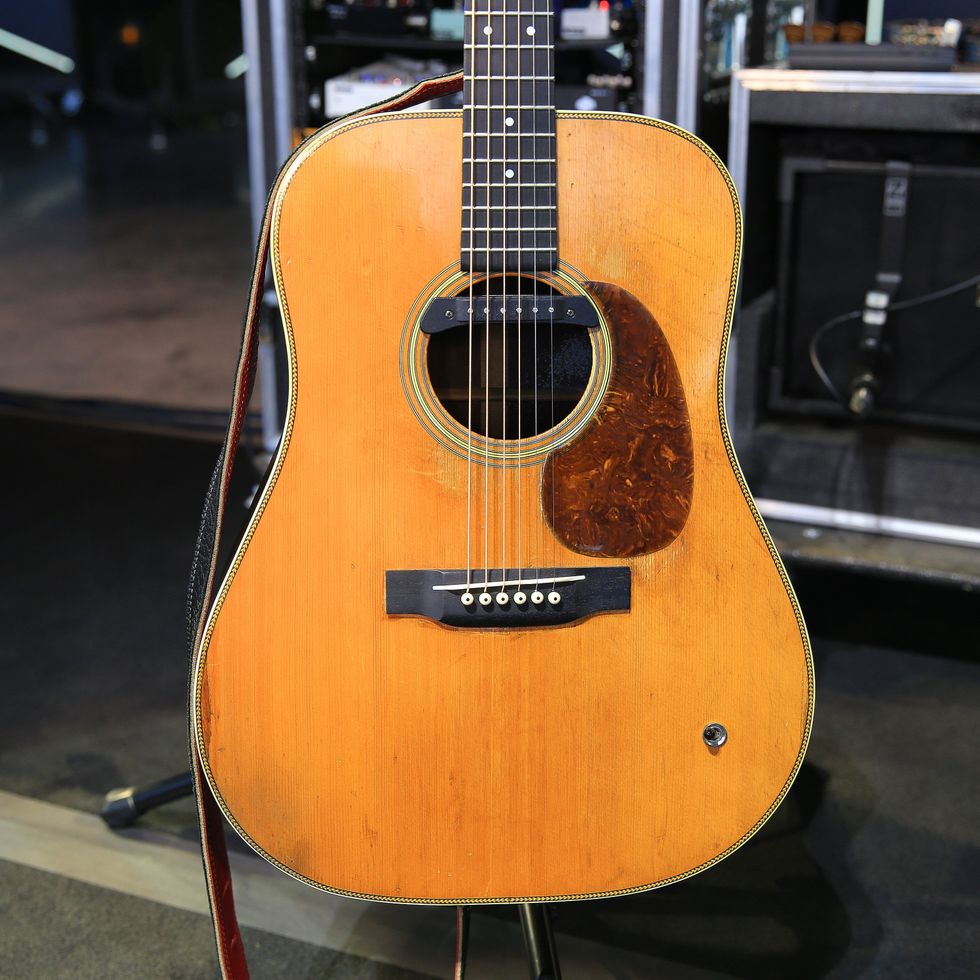
Yes, that’s a pickup selector on a 1945 Martin D-28, but before you vilify Billy for such blasphemy, understand this acoustic was in shambles when he acquired it. The bridge had been incorrectly moved, there were holes drilled into it near the bottom strap button, the binding was cracked, and the neck was so bowed it had a hump in the middle. Prior to Strings, it belonged to longtime Willie Nelson guitarist Jody Payne, who died in 2013. Billy had Nashville tech Dave Johnson bring it back to life with all the required pickups and mics. Strings addresses potential criticism by sharing that “it’s a 1945 Martin that is now being played onstage in front of thousands of people each night, and that makes me happy.” Another thing Billy had done was handled by the Martin Custom Shop where they refinished and reshaped the neck into a more familiar modified-V profile.
Ashes to Ashes
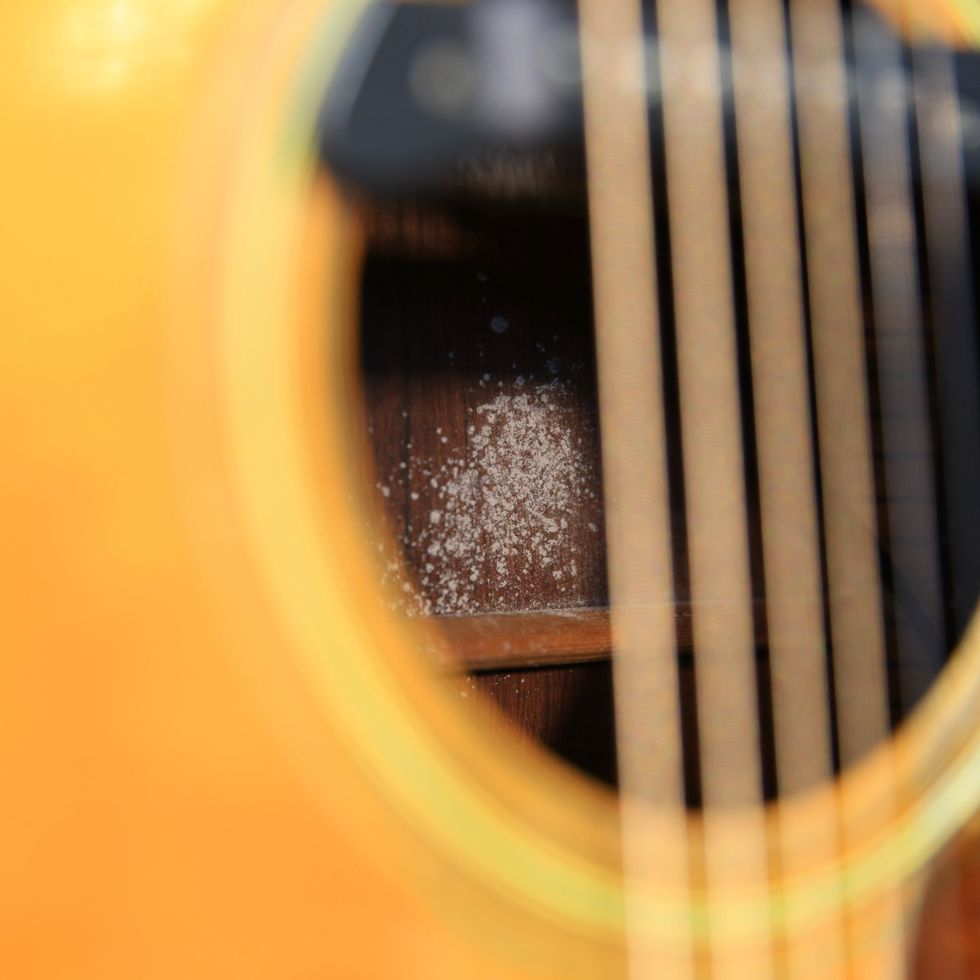
This next bit has to be one of the more astonishing (and touching) revelations uncovered during a Rundown. While Billy was out at the Hollywood Bowl for Willie Nelson’s 90th birthday bash in April, he showed the instrument to Willie’s right-hand man and harmonica player Mickey Raphael. He couldn’t believe it was Jody’s Martin, so he suggested to Strings that he should sprinkle in some of Payne’s ashes that have been on tour with the Family since 2013. He obliged, and, as you can see, Jody has been on tour with Billy ever since.
Billy addressed the conflicting feelings behind that during the Rundown, stating that, “who are we to make Jody’s spirit continue to be onstage every night, but Mickey was his good friend, and he thinks that’s what he would’ve wanted. It’s a beautiful guitar, I love this thing dearly, and they all mean something to me. They’re both my tools and my children.”
All the Bells and Whistles
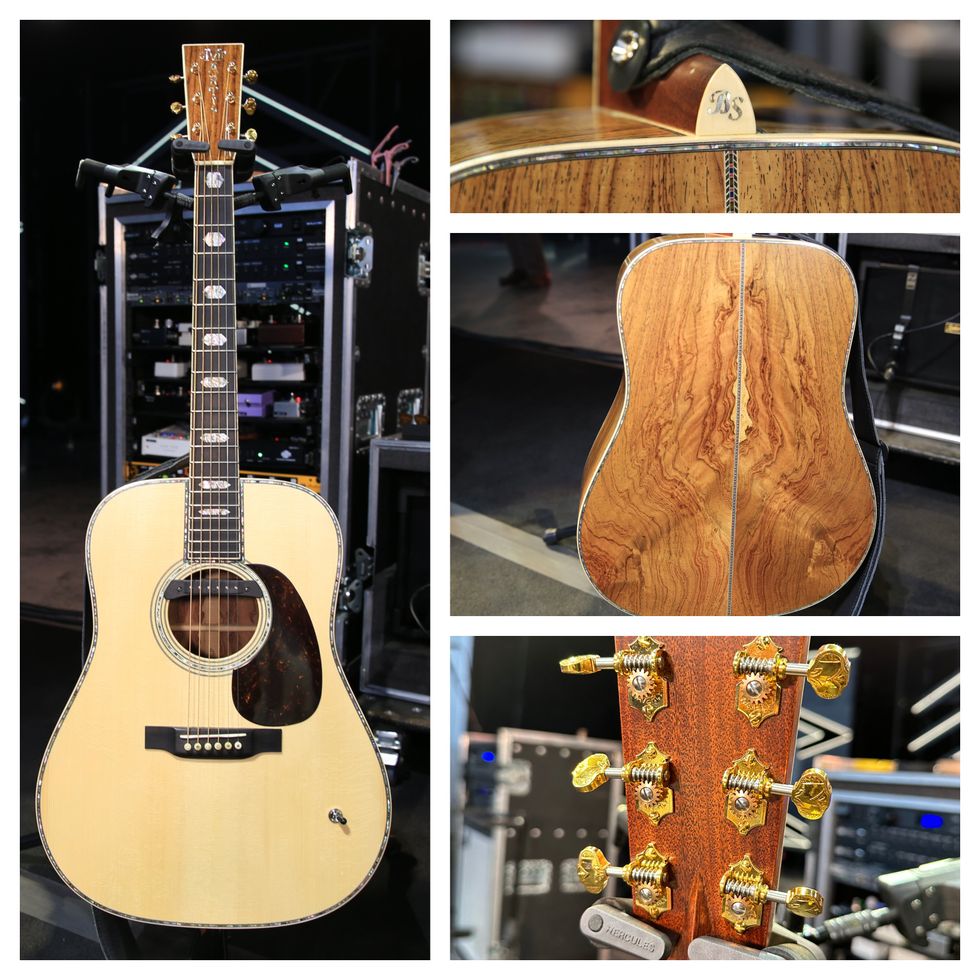
This stunner is a custom D-45 from Martin that is equipped with all of Billy’s mics and pickups. Unplugged, it is snappy, booming, and full. As you’ll see in all the photos, anywhere they could dress it up, whether binding, inlays, headstock, tuners, neck joint, or rosette, they did it.
Pride and Joy

This 1940 Martin D-28 will never go near a drill press or Dremel tool. Strings uses it for moments onstage when the band (guitar, standup bass, banjo, and fiddle) goes back in time and huddle around a mic for throwback jams. This prewar icon rarely leaves Billy’s sight and travels with him to the hotel each night.
Excalibur
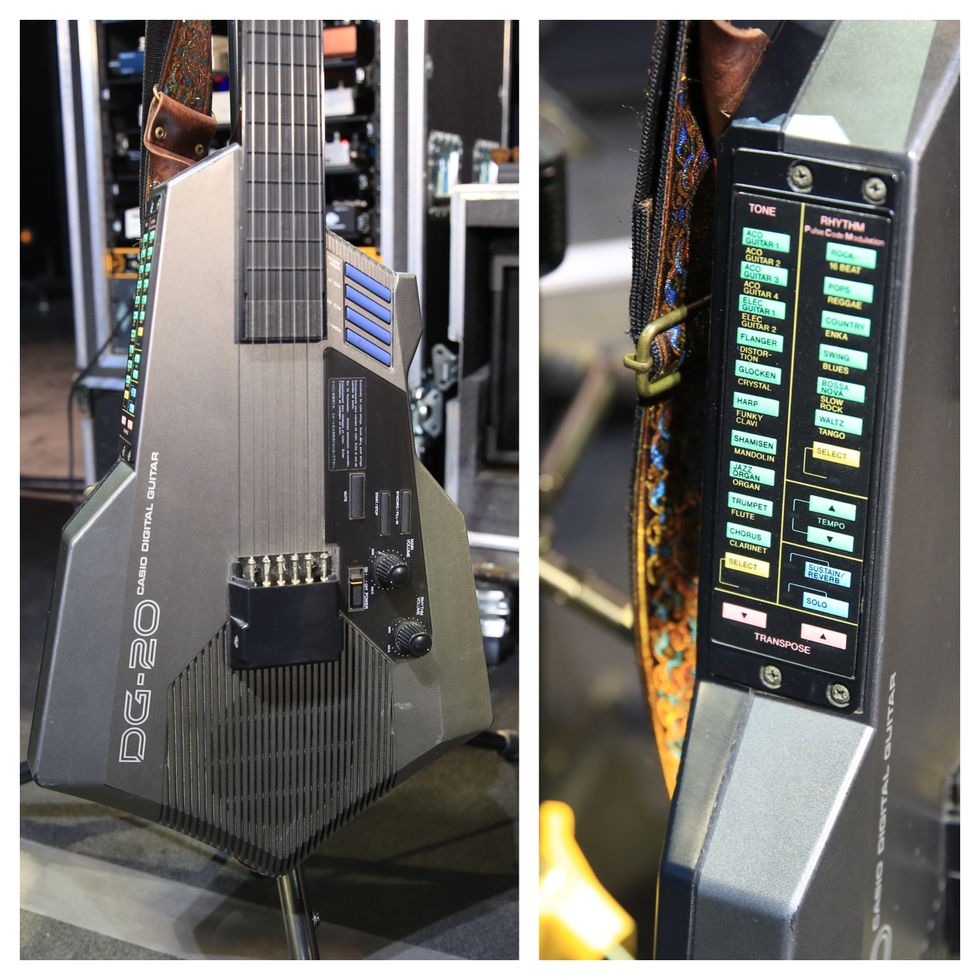
If you ever wondered where Billy was going to take his music and sound next, we have seen his future, and it resides in this 1980s Casio DG-20 Digital Guitar Synth. To take it from the toy aisle to the stage, Dave Johnson had to work on the saddle and rework the MIDI pickups for each string.
Billy Strings' Rack
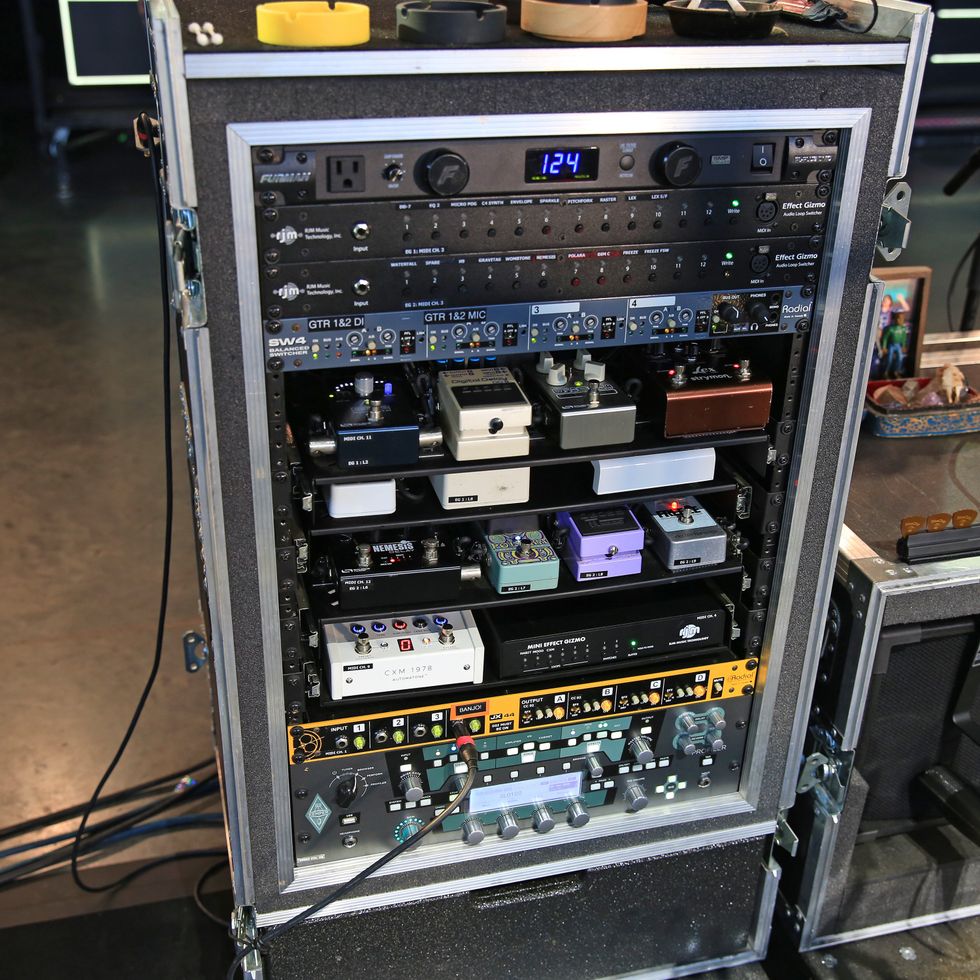
Bluegrass purists were shaking their fists at the sky when Strings’ 2019 Rundown revealed he ran his flattop through a DI, 10 pedals, and a Fender Deluxe Reverb. They’ll need to screw their calvaria back on after seeing Billy’s setup now. It now includes a DI, 21 pedals, two expression pedals, a pair of volume pedals, a RJM Mastermind MIDI switcher, and a Kemper Profiler. The amp he landed on inside the modeler is a high-gain SLO-100, based on the coveted Soldano screamer. Utility components in the rack include a pair of RJM Effect Gizmos, a Radial SW4 Balanced Switcher, a RJM Mini Effect Gizmo, and a Radial JX44 Guitar Signal Manager and Switcher.
Billy Strings' Pedals
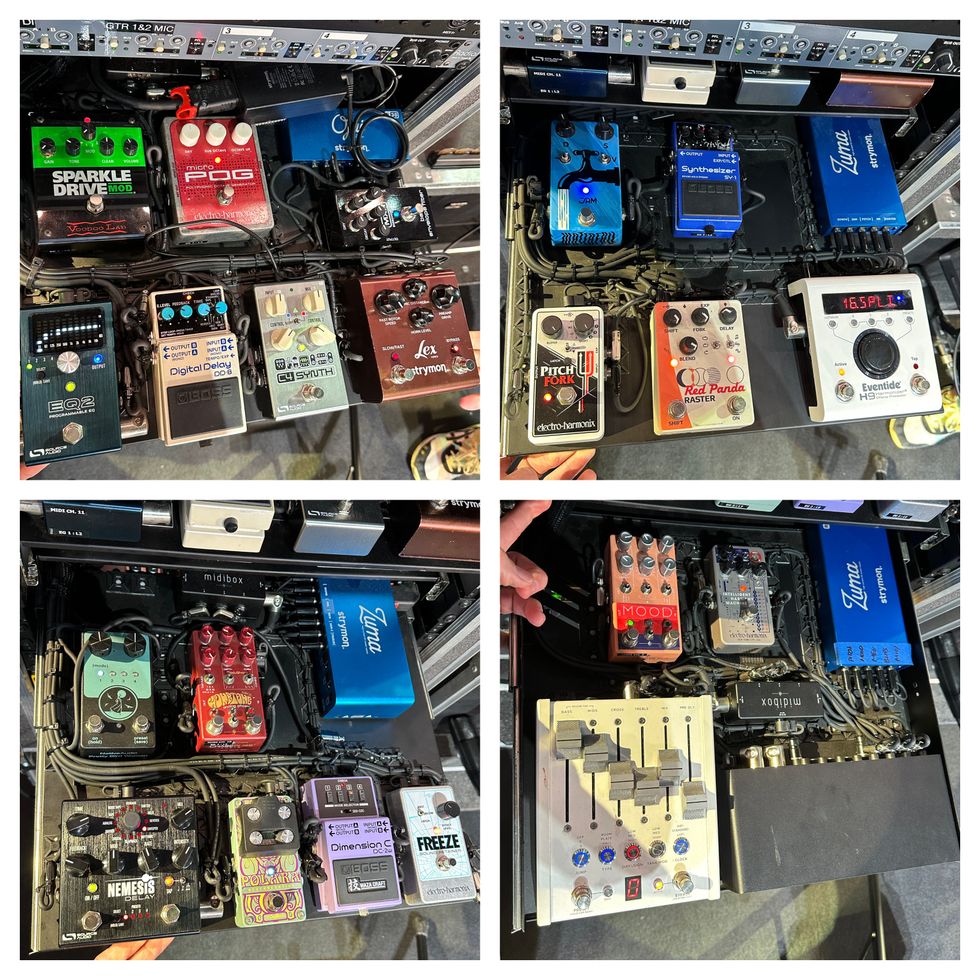
When Billy wants to turn his acoustic into space dust, he’s got a hearty squadron of willing vaporizers. Starting at the top left, he has a Voodoo Lab Sparkle Drive, Electro-Harmonix Micro POG, MXR Bass Envelope Filter, Source Audio EQ2, Boss DD-8 Digital Delay, Source Audio C4 Synth, and a Strymon Lex. A Strymon Ojai powers the pedals in this drawer. Moving to the right, he has a Jam Pedals Waterfall, Boss SY-1 Synthesizer, EHX Pitch Fork, Red Panda Raster, and an Eventide H9. All of these gizmos are powered by a Strymon Zuma. Going down to the bottom left, Strings assembles this drawer with a NativeAudio Pretty Bird Woman, a Chase Bliss Wombtone, Source Audio Nemesis, DigiTech Polara, Boss DC-2w Dimension C, and an EHX Freeze. Another Strymon Zuma powers all these creatures. The final drawer houses a Chase Bliss Audio Mood, Electro-Harmonix Intelligent Harmony Machine, and a Chase Bliss Audio Automatone MKII Preamp. Everything comes to life with a third Strymon Zuma.
Command Center
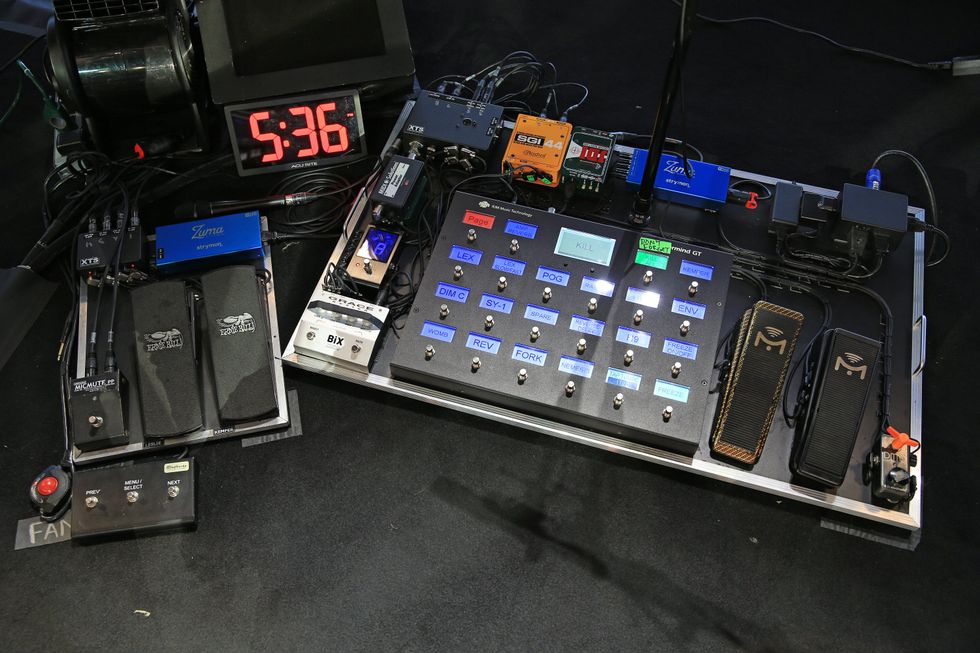
This is where Billy Strings tap dances each night—an incredible feat given how much he’s already doing with his hands. A RJM Mastermind GT MIDI switcher is the brains of the operation as it engages all his pedals and the Kemper’s SLO-100 profile. The Grace Design BiX gives FOH a clean, pure acoustic sound. A pair of Mission Engineering SP-1 expression pedals handle manipulating time-based and modulation effects. His two Ernie Ball 40th Anniversary Volume Pedals bring in Leslie effects and the Kemper. A TC Electronic Ditto Looper remains on the board since our last encounter. A Peterson StroboStompHD covers any on-the-fly tuning needs during his sets. Nashville’s XAct Tone Solutions built out this tonal headquarters and features several of their custom devices and routing boxes. A couple Strymon Zuma units power everything on the floor, while a duo of Radial boxes helps organize. (The SGI-44 talks to the rack-mounted JX44, and the JDI is a passive direct box designed to handle gobs of levels without any unwanted crunch.)
![Rig Rundown: Billy Strings [2023]](https://www.premierguitar.com/media-library/rig-rundown-billy-strings-2023.jpg?id=34664971&width=1200&height=675)






![Rig Rundown: AFI [2025]](https://www.premierguitar.com/media-library/youtube.jpg?id=62064741&width=1245&height=700&quality=70&coordinates=0%2C0%2C0%2C0)












 Shop Scott's Rig
Shop Scott's Rig















![Devon Eisenbarger [Katy Perry] Rig Rundown](https://www.premierguitar.com/media-library/youtube.jpg?id=61774583&width=1245&height=700&quality=70&coordinates=0%2C0%2C0%2C0)












